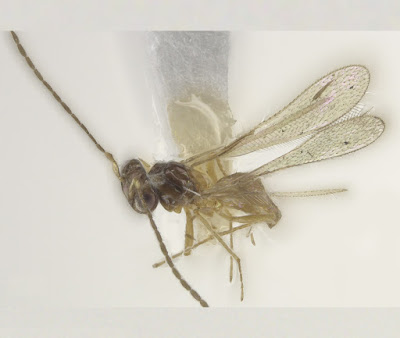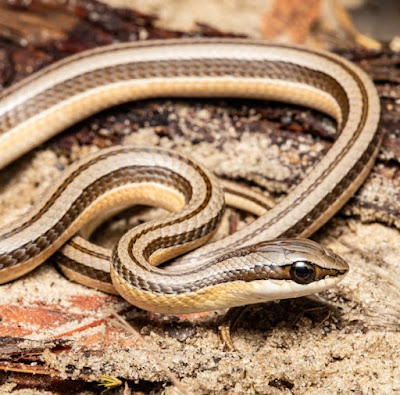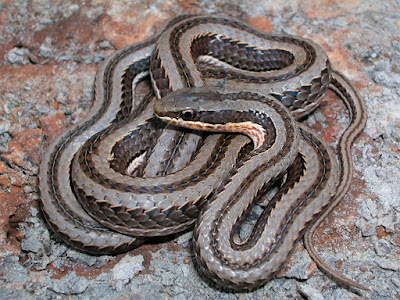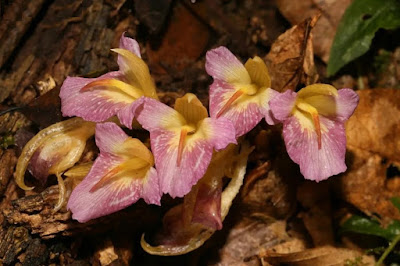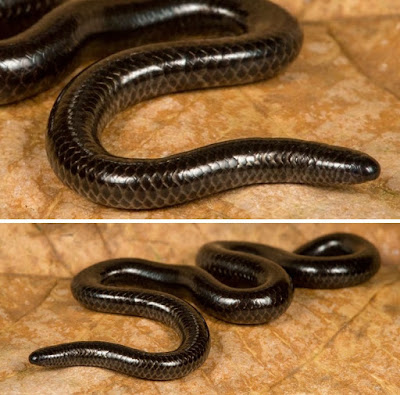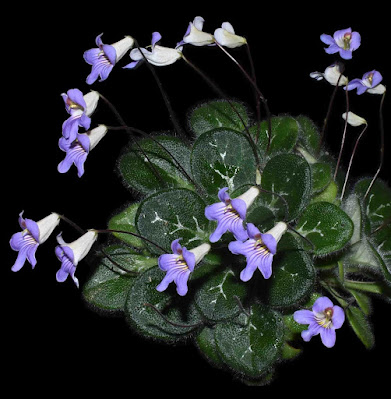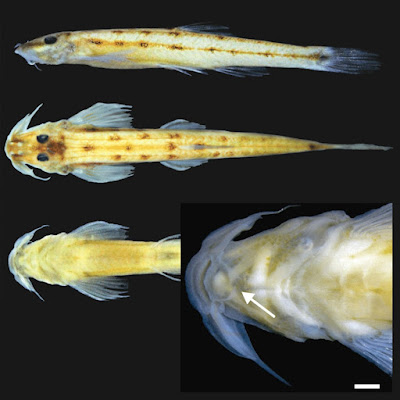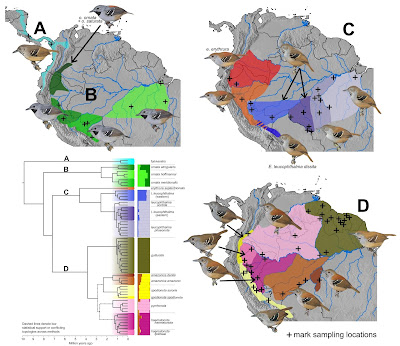[Most Recent Entries] [Calendar View]
Thursday, December 31st, 2020
| Time | Event | ||||
| 7:55a | [Entomology • 2020] Description of the Male of Tanyxiphium harriet (Hymenoptera: Mymaridae), with New Distribution Records and Synonymy
Abstract Tanyxiphium longissimum Huber, syn. n. (Hymenoptera: Mymaridae) is synonymized under T. harriet (Zeya) based on examination of specimens from Hainan Island and Yunnan Province in the Oriental part of China, Sulawesi Island in Indonesia, Peninsular Malaysia, and Thailand. These are new country distribution records except for Thailand. The previously unknown male of T. harriet is described from Sulawesi Island, and the female is redescribed and illustrated based on non-type material examined. Keywords: Hymenoptera, Chalcidoidea, fairyfly, Gonatocerini, taxonomy, Oriental region Tanyxiphium harriet Zeya 2015 Serguei V. Triapitsyn, Zhulidezi Aishan and John T. Huber. 2020. Description of the Male of Tanyxiphium harriet (Hymenoptera: Mymaridae), with New Distribution Records and Synonymy. Zootaxa. 4896(1);105–112. DOI: 10.11646/zootaxa.4896.1.5 | ||||
| 9:49a | [Herpetology • 2019] Kladirostratus gen. nov. & Psammophylax kellyi • A Snake in the Grass: Genetic Structuring of the Widespread African Grass Snake (Psammophylax Fitzinger 1843), with the Description of A New Genus and A New Species
Abstract Psammophylax (Fitzinger 1843) is a widespread yet poorly studied genus of African grass snakes. A genetic phylogeny of six of the seven species was estimated using multiple phylogenetic and distance‐based methods. To support the genetic analyses, we conducted morphological analyses on the body (traditional morphology) and head (geometric morphometrics) separately. Phylogenetic analyses recovered a similar topology to past studies, but with better resolution and node support. We found substantial genetic structuring within the genus, supported by significantly different head shapes between P. a. acutus and other Psammophylax . Psammophylax a. acutus was recovered as sister to its congeners, and sequence divergence values and morphometrics supported its recognition as a new genus. Increased sampling in East Africa (Tanzania, Kenya, and Ethiopia) revealed that Psammophylax multisquamis is polyphyletic, necessitating the description of a new, morphologically cryptic species from northern Tanzania. The distribution of P. multisquamis sensu stricto is likely restricted to Kenya and Ethiopia. The study has further resolved multiple aspects of Psammophylax systematics, including the taxonomic validity of two central African subspecies, P. variabilis vanoyei (Laurent 1956) and P. tritaeniatus subniger (Laurent 1956). Inclusion of specimens from the more remote parts of Africa, in future analyses, may result in the recovery of additional diversity within Psammophylax . Keywords: geometric morphometrics, grass snake, molecular biology, phylogenetic analysis, Psammophiinae, taxonomy
Kladirostratus acutus (Günther 1888) Kladirostratus gen. nov. Conradie, Keates & Edwards Proposed common group name: Branch's Beaked Snakes. Type species: Psammophis acutus Günther 1888. Etymology: The name Kladirostratus is derived from the combination of the Greek word κλάδος (klados) meaning “branch,” and the Latin word “rostratus” meaning beaked. The name honors Professor William R. Branch (1947–2018), Curator Emeritus of herpetology at Port Elizabeth Museum, in recognition of his many contributions to the herpetology of Africa, especially regarding snakes. We benefitted from his generosity as a mentor and he helped shape our careers, for which we are thankful. The name is masculine in gender. Members of this genus: Kladirostratus acutus (Günther 1888) comb. nov. including the currently recognized subspecies Kladirostratus a. acutus and Kladirostratus a. jappi (Broadley, 1971); Kladirostratus togoensis (Matschie 1893) comb. nov. The latter is provisionally included in this genus based on morphological similarities, but this requires confirmation through molecular phylogenetic analysis. Distribution: Kladirostratus a. acutus comb. nov. is known from most of Angola through northwestern Zambia, southern Democratic Republic of the Congo (DRC), into western Tanzania, northern Malawi, and north to Rwanda (fide Broadley, 1971). Kladirostratus a. jappi comb. nov. is known only from western Zambia and northeastern Angola (fide Broadley, 1971). Kladirostratus togoensis comb. nov. is known from Ghana, Togo, Central African Republic, northern DRC, and western Uganda (fide Broadley, 1971; Spawls et al., 2002). Occurs at elevations of 450–1,800 m. Psammophylax kellyi sp. nov. Conradie, Keates & Edwards Proposed common name: Tanzanian Grass Snake or Tanzanian Skaapsteker. Etymology. The specific epithet is a patronym in honor of Christopher M. R. Kelly for his considerable contribution to the systematics of the snake family Lamprophiidae. Chad Keates, Werner Conradie, Eli Greenbaum and Shelley Edwards. 2019. A Snake in the Grass: Genetic Structuring of the Widespread African Grass Snake (Psammophylax Fitzinger 1843), with the Description of A New Genus and A New Species. Journal of Zoological Systematics and Evolutionary Research. 57(4); 1039-1066. DOI: 10.1111/jzs.12337 Eastern Cape researchers discover new snake species | ||||
| 11:04a | [Botany • 2020] Zingiber porphyrochilum (Zingiberaceae) • A New Species from Yunnan, China Abstract Zingiber porphyrochilum Y.H. Tan & H.B. Ding sp. nova (Zingiberaceae) from Yunnan, China is described and illustrated. It is similar to Z. densissimum in its bilobed ligule and flower shape but differs from it by having a longer clumped pseudostem (1.5–2.5 m tall vs. solitary, 0.4–0.7 m tall), longer ligules (3–11 mm long vs. ca. 3 mm long), brownish yellow corolla lobes (vs. pure white), labellum and lateral staminodes brownish yellow at the base, and bright clear red to dark purplish towards the apex and margins (vs. pure white). Zingiber porphyrochilum Y.H.Tan & H.B.Ding 紫唇姜 Hong-Bo Ding, Bin Yang, Xiao-Qiang Lu and Yun-Hong Tan. 2020. Zingiber porphyrochilum (Zingiberaceae), A New Species from Yunnan, China. Annales Botanici Fennici. 57(4-6); 197-201. DOI: 10.5735/085.057.0401 | ||||
| 2:24p | [Herpetology • 2020] Leptotyphlops sylvicolus Broadley & Wallach, 1997 • One Species hides Many: Molecular and Morphological Evidence for Cryptic Speciation in A Thread Snake (Serpentes: Leptotyphlopidae)
Abstract Theo Busschau, Werner Conradie and Savel R. Daniels. 2020. One Species hides Many: Molecular and Morphological Evidence for Cryptic Speciation in A Thread Snake (Leptotyphlopidae: Leptotyphlops sylvicolus Broadley & Wallach, 1997). Journal of Zoological Systematics and Evolutionary Research. DOI: 10.1111/jzs.12401 We investigated the phylogeographic structure of a fossorial forest‐living snake species, Leptotyphlops sylvicolus. Phylogenetic and population genetic analyses suggest the presence of phylogeographic breaks broadly congruent to those exhibited by other forest‐living taxa. Divergence‐time estimates suggest that cladogenesis was driven by habitat fragmentation during the late Miocene climatic shifts. The species delimitation methods retrieved 10–12 putative species nested within L. sylvicolus. Morphological analyses exhibit large overlap among putative species but indicate differences between grassland and forest species. | ||||
| 3:15p | [Botany • 2020] Primulina elegans (Gesneriaceae) • A New Species from North Vietnam
Abstract Primulina elegans (Gesneriaceae), a new species from Vietnam is described. This species is similar to P. gemella and P. diffusa in having stolons and papillose‐hispid leaves, but is easily distinguished from them by having 9–15 cymes and corollas with two brown stripes on the adaxial lip and nine purplish lines on the abaxial lip. Furthermore, Primulina elegans differs from P. gemmella by its broadly infundibuliform corollas with purplish glandular pubescent filaments, and from P. diffusa by having three slightly purplish glandular pubescent staminodes. Keywords: Gesneriaceae, new species, Primulina, Vietnam Primulina elegans B. M. Wang, Y. H. Tong & N. H. Xia sp. nov. Etymology: The species epithet refers to its beautiful flowers, which gives this species a high ornamental value. Yi‐Hua Tong, Bing‐Mou Wang, Tien Chinh Vu and Nian‐He Xia. 2020. Primulina elegans (Gesneriaceae), A New Species from North Vietnam. Nordic Journal of Botany. DOI: 10.1111/njb.02942 | ||||
| 4:04p | [Ichthyology • 2020] Microcambeva bendego • A New Catfish Species of Microcambeva Costa & Bockmann 1994 (Siluriformes: Trichomycteridae) from A Coastal Basin in Rio de Janeiro State, southeastern Brazil Abstract Microcambeva bendego, a small psammophilous catfish species, is described from the rio Guapi-Macacu basin at Guanabara Bay in Rio de Janeiro State, an Atlantic Forest remnant. This coastal drainage has been explored by several naturalists and fish researchers since the 19th century. It is a drainage with remarkably high endemism and species richness, and some recently-described and threatened species. The new species is distinguished from all congeners by two distinctive characters: long finger-like projections in the branchial isthmus and a large opercular patch of odontodes with 19 odontodes. Due to the paucity of specimens (n=3) osteological features of the new species were accessed by CT-Scan images of the holotype. Microcambeva bendego shares putative synapomorphies with two congeners, M. ribeirae and M. filamentosa, such as the fusion of supraorbital pore s6, the absence of ossification in the anterior autopalatine cartilage, the presence of an elongated and wide posterior process of the autopalatine, and a concavity on the dorsal process of the opercle. Those characters suggest that M. bendego is more closely related to those two species from the rio Ribeira de Iguape basin than to other congeners. The biogeography and conservation status of M. bendego are also discussed. Keywords: Pisces, Taxonomy, Microcambevinae, Fluminense ecoregion, Atlantic Forest, Guanabara bay, CT-Scan
Lucas Silva de Medeiros, Cristiano Rangel Moreira, Mario de Pinna and Sergio M. Q. Lima. 2020. A New Catfish Species of Microcambeva Costa & Bockmann 1994 (Siluriformes: Trichomycteridae) from A Coastal Basin in Rio de Janeiro State, southeastern Brazil. Zootaxa. 4895(1); 111–123. DOI: 10.11646/zootaxa.4895.1.6 | ||||
| 4:15p | [Ornithology • 2021] Genus Epinecrophylla • Systematics of A Neotropical Clade of Dead-leaf-foraging Antwrens (Aves: Thamnophilidae)
Highlights • Comprehensive taxon and population-level sampling for thousands of genetic markers. • Well-resolved phylogeny for the group. • Three broadly sympatric Amazonian species complexes. • Paraphyly at the species and subspecies levels. Abstract The stipple-throated antwrens of the genus Epinecrophylla (Aves: Thamnophilidae) are represented by eight species primarily found in the lowlands of the Amazon Basin and the Guiana Shield. The genus has a long and convoluted taxonomic history, with many attempts made to address the taxonomy and systematics of the group. Here we employ massively parallel sequencing of thousands of ultraconserved elements (UCEs) to provide both the most comprehensive subspecies-level phylogeny of Epinecrophylla antwrens and the first population-level genetic analyses for most species in the genus. Most of our results are robust to a diversity of phylogenetic and population genetic methods, but we show that even with thousands of loci we are unable to fully resolve the relationships between some western Amazonian species in the haematonota group. We uncovered phylogenetic relationships between taxa and patterns of population structure that are discordant with both morphology and current taxonomy. For example, we found deep genetic breaks between taxa in the ornata group that are currently regarded as species, and in the haematonota and leucophthalma groups we found paraphyly at the species and subspecies levels, respectively. As has been found in many Amazonian taxa, our phylogenetic results show that the major river systems of the Amazon Basin appear to have an effect on the genetic structure and range limits within Epinecrophylla. Our population genetics analyses showed extensive admixture between some taxa despite their deep genetic divergence. We present a revised taxonomy for the group and suggest areas for further study. Keywords: Systematics, Ultraconserved elements, Phylogenomics, Epinecrophylla, Amazonia Oscar Johnson, Jeffrey T. Howard and Robb T. Brumfield. 2021. Systematics of A Neotropical Clade of Dead-leaf-foraging Antwrens (Aves: Thamnophilidae; Epinecrophylla). Molecular Phylogenetics and Evolution. 154, 106962. DOI: 10.1016/j.ympev.2020.106962 |
| << Previous Day |
2020/12/31 [Calendar] |
Next Day >> |
